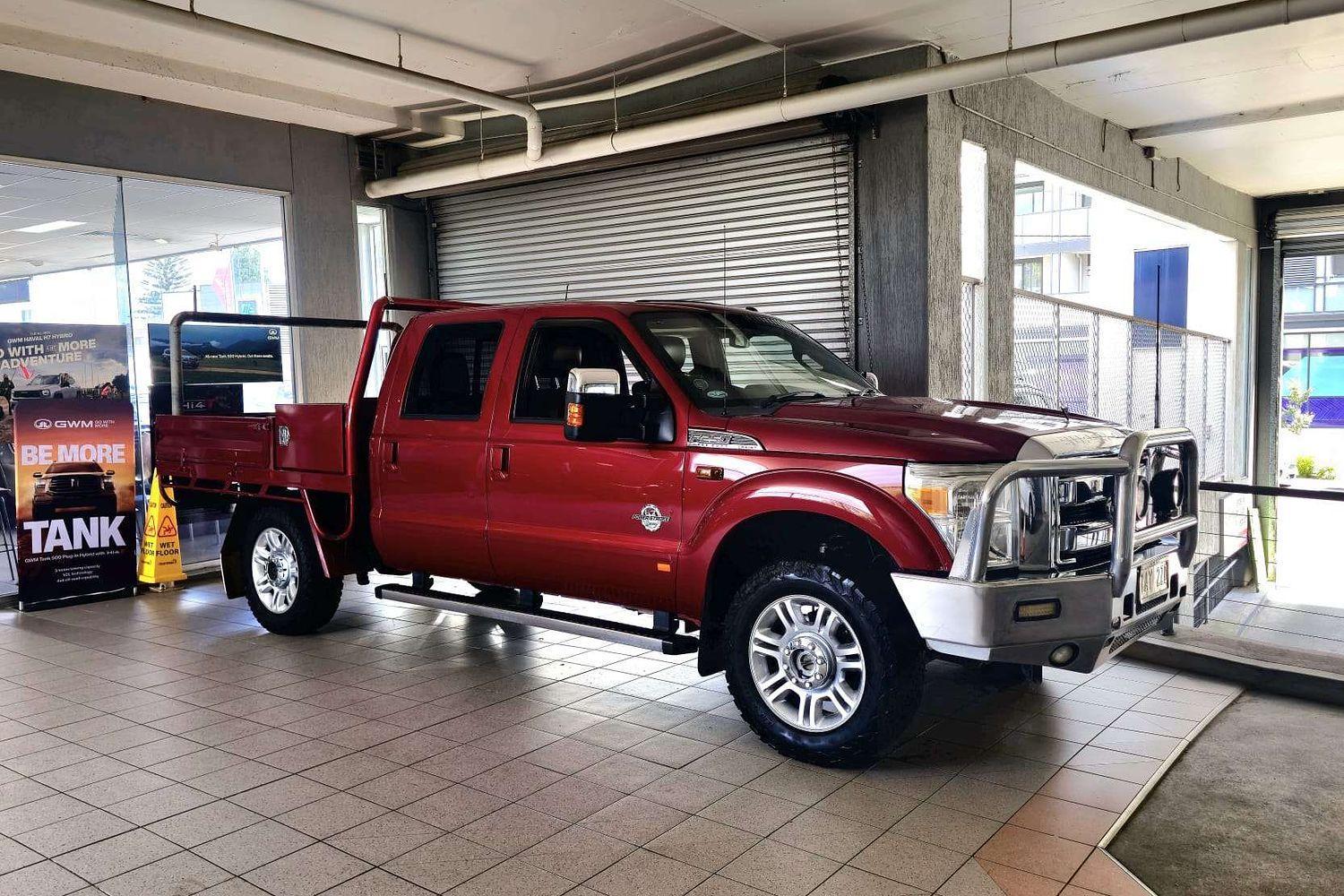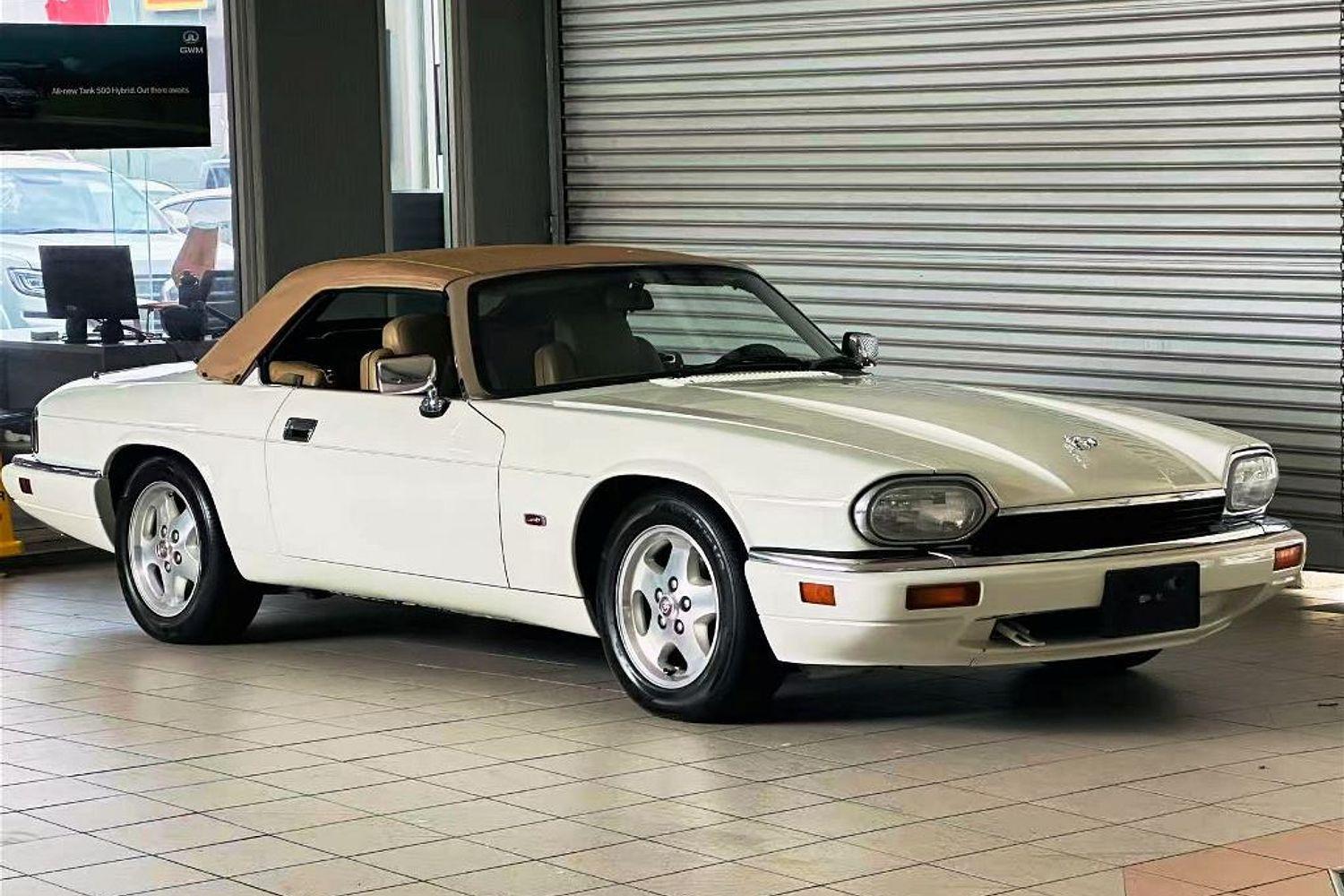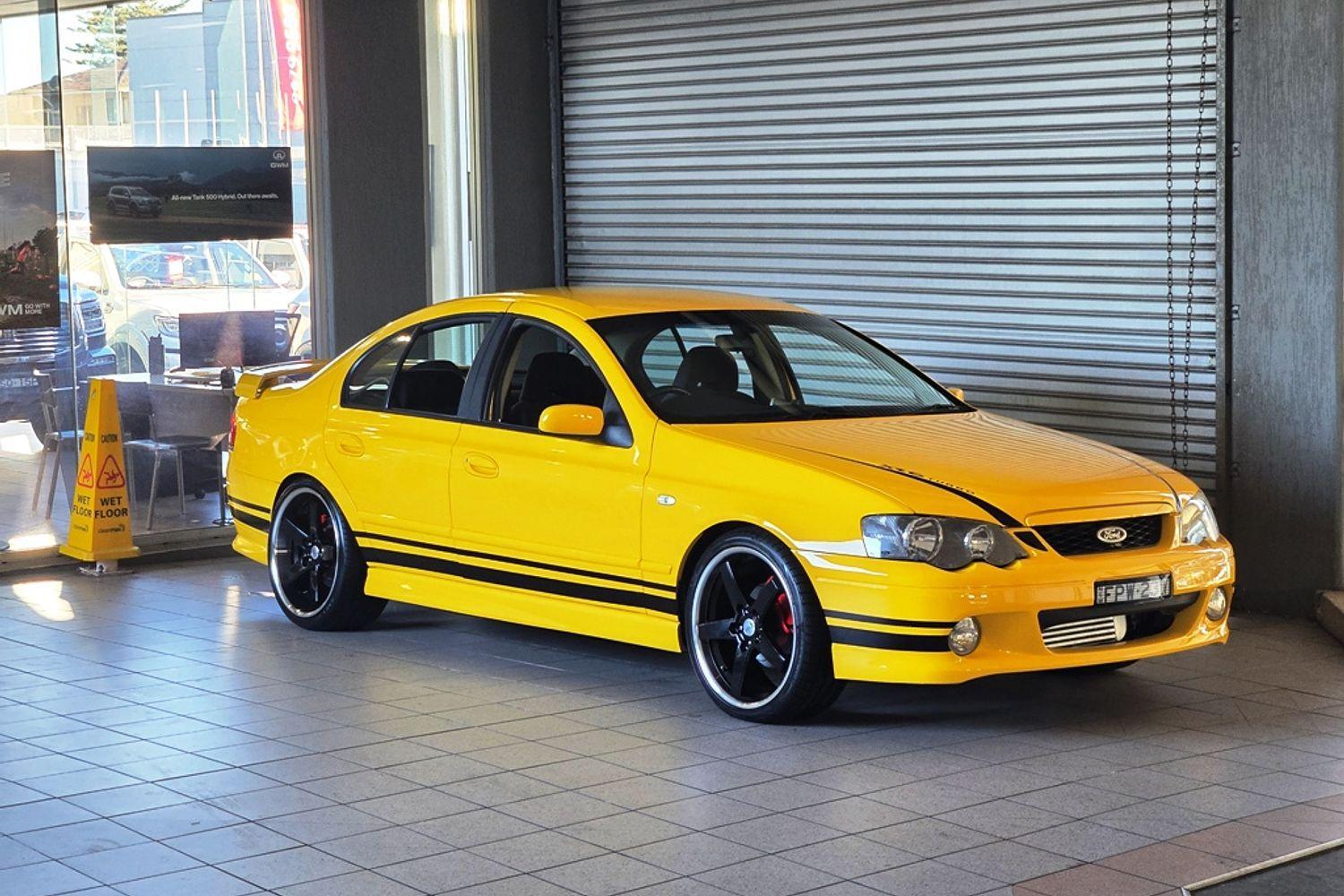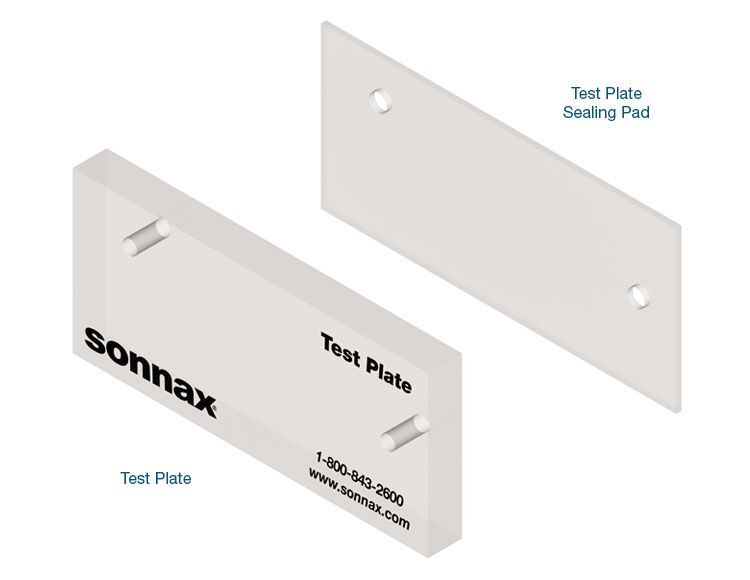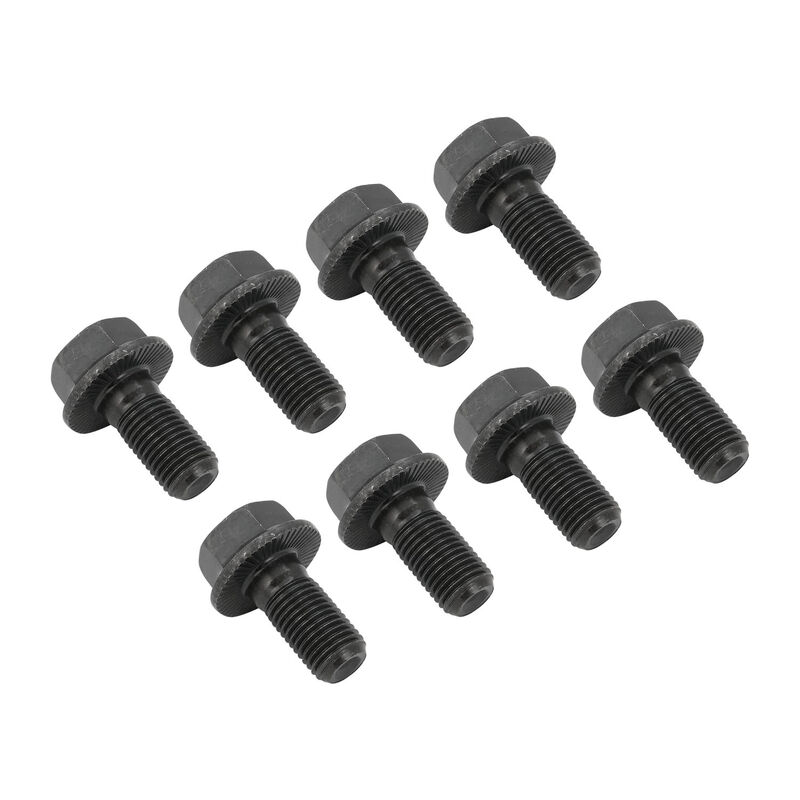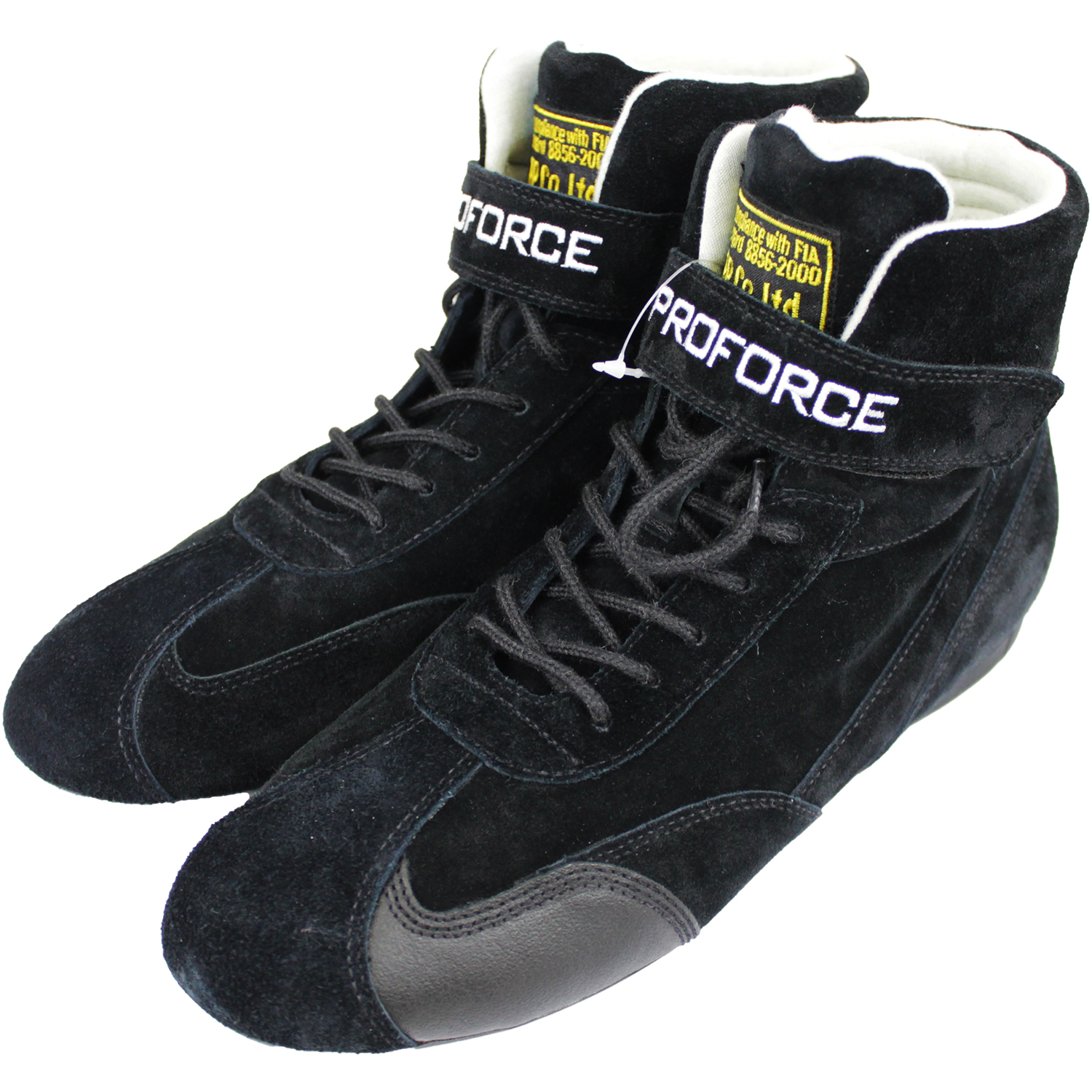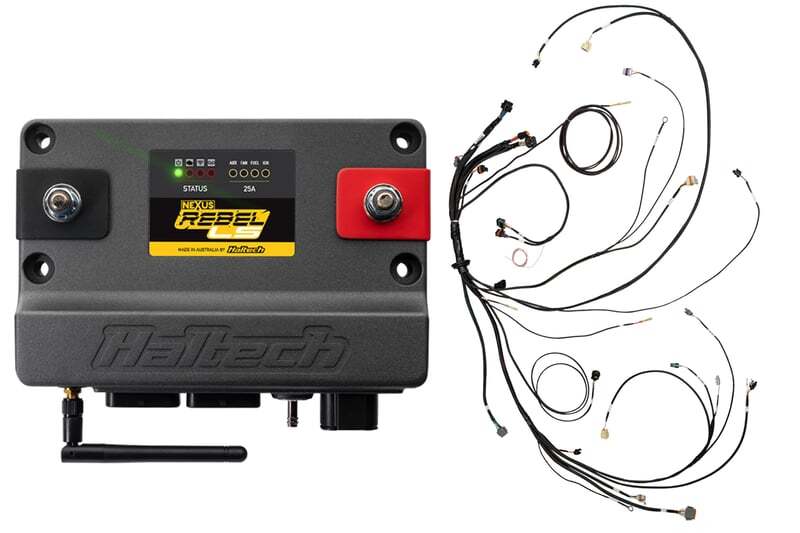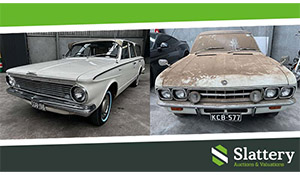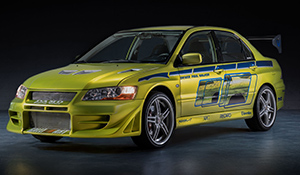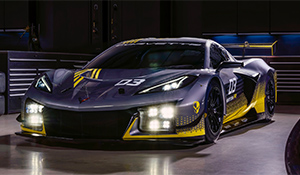FEATURE – Alfa Romeo B.A.T. auction
Words: Mike Ryan
Photos: Copyright Darin Schnabel, courtesy RM Sothebys
In art terms, a triptych is a three-panel piece, usually a painting on separate canvases that are linked by a common theme or treatment and designed to be viewed together.
There’s no real parallel in automotive terms. Or at least there wasn’t until three distinct, and distinctly connected examples of Italian post-war automotive styling were gathered together in the late 1980s.
More recently, these three extreme creations for offered for sale – as a trio – for the first time.

New York Gallery
Given the cars you see here are regarded as art, it was fitting that they were offered in a ‘Contemporary Art Evening Auction,’ presented by RM Sotheby’s in New York on 28 October.
The three cars were created across a three-year period by Carrozzeria Bertone, to commission from Alfa Romeo, to explore the application of aerodynamics in automobile design.

Alfa Romeo were no strangers to such experiments at the time, having commissioned the C52 ‘Disco Volante’ (‘Flying Saucer’) in 1952 to study the effect of aerodynamics. While the chassis and running gear of the C52 was taken from Alfa’s conventional 1900 model, the body, by Carrozzeria Touring, was anything but conventional, with a rounded shape, oval cross section and faired-in undertray, all designed to make the car slipperier, even in crosswinds.
Production of these sports cars reached five, all of which were raced in period, but Alfa Romeo felt that aerodynamics could be taken a step further. And for that next step, they called on Carrozzeria Bertone.

Enter Franco
Bertone had been established in 1912 but didn’t create their first bespoke body until 1921. That initial product was built on a SPA chassis and consisted of a sporty, torpedo-style four-seat body with vee’d windscreen and one-piece mudguards.
That debut was followed by a string of bodies for mainly Fiat and Lancia chassis that were elegant but not particularly outstanding. A smattering of Alfa Romeos were produced in this period too, but reflecting the versatility of Bertone’s skills – or more likely, the need to keep the business going – trucks, buses and even ambulance bodies were built, too.
Arguably, it was only after World War II that Bertone really established themselves as a coachbuilder. That’s due in large part to the talented roster of automobile designers that worked for Bertone after the war. These include Giovanni Michelotti, Giorgetto Giugiaro, Marcello Gandini and Franco Scaglione.

Born in Florence in 1916, Scaglione studied aeronautical engineering and served in the Italian Army during WWII. After the end of hostilities, Scaglione sought to apply his design skills to automobiles. Choosing Bologna to make his start in 1948 wasn’t an inspired choice, as the city was hardly the hub of Italy’s automotive industry.
Tired of sketching clothes for various fashion houses, Scaglione relocated to Turin in 1951. This was a smarter move, and if things had turned out a little differently, Scaglione’s name could have been connected with Farina (aka Pininfarina) as he had approached Battista Farina for work. Giuseppe ‘Nuccio’ Bertone was more receptive and hired the 35-year-old.

Bertone’s products were still mostly conventional at the time, but Scaglione changed that almost immediately, starting with a radical design on an Abarth 1500 chassis incorporating many elements that would be applied to cars that followed.
Debuting at the 1952 Turin Motor Show, the Scaglione-designed, Bertone-built Abarth featured a front end defined by three projecting pods, each mounting a headlight and flowing back into the rest of the curvaceous body. Bisecting the three-pronged front end was an open grille split by a single grille bar. A low and sleek glasshouse area include a wraparound windscreen and rear glass that was split by a central spine. Slim, blade-like fins graced the rear end and featured inset tail lights.

Scaglione’s Abarth design also included distinct coves aft of each wheelarch, which almost certainly inspired the similar treatment applied to Chevrolet’s Corvette in 1956.
What is certain is that Alfa Romeo was inspired by Scaglione’s sleek design and sought Bertone’s involvement to develop their own aerodynamic styling exercises.
As a sidenote, the Bertone Abarth 1500 was purchased by the Packard Motor Company after the ’52 Turin Show and sent to the US. At the same show, Bertone’s rebodying of an MG TD in coupe and convertible form also attracted American attention, leading to a small run of MG-Arnolts being produced by Bertone over the next two years.

Birth of the B.A.T.
Bertone and Alfa Romeo’s partnership to develop the theme of an aerodynamically advanced car was perfect for Scaglione, given his early studies in aeronautics. But rather than create another ‘Disco Volante,’ Scaglione took the exploration of aerodynamics to a point even Alfa Romeo wouldn’t have considered.
The title for this research car was B.A.T. (Berlina Aerodinamica Tecnica – Technical Aerodynamic Sedan). Taking the chassis and running gear from an Alfa Romeo 1900 Sprint meant the B.A.T. concept featured an 1,884cc twin-cam four-cylinder engine producing around 100hp (74kW) at 5500rpm. This typically peppy Alfa engine drove the rear wheels through a four-speed manual transmission and could reach a top speed in the range of 112mph (180km/h).

While the standard 1900 Sprint (also known as the 1900C) was hardly an unattractive car, it was rather bulbous, with the small glasshouse and high waistline accentuating this.
The B.A.T. used nothing of the conventional Sprint body. Instead, Scaglione crafted an incredibly sleek design that incorporated elements from the Abarth he’d created a year earlier.
This wasn’t just styling for styling’s stake, though. There was some science behind the B.A.T. Four full-size studies had been created and rejected before a fifth was taken from the modelling stage to be produced in metal, thus the ‘B.A.T. 5’ moniker that the Bertone Alfa Romeo wore when it debuted at the 1953 Turin Motor Show.

To say the B.A.T. 5 was a sensation at Turin was an understatement: nothing like it had been seen at an auto show before. From the pronounced front end pods to the sleek wrapround glass and bold, yet functional rear fins, the B.A.T. looked like something out of science fiction, but remember this was 1953. There was no Space Race yet, no NASA and jets were only just starting to overtake propeller aircraft in civilian and military applications.

Building it Up, Toning it Down
Emboldened by the response to the B.A.T. 5, Bertone and Alfa Romeo agreed to develop the theme further. The result, unveiled at the 1954 Turin Motor Show, was the B.A.T. 7.
This was even more extreme than the previous year’s creation, with Scaglione flattening the front end by sloping the bonnet and narrowing the grille openings. At the rear, the fins were extended and enlarged, curving inward to the more pronounced spine, while the back end was beautifully rounded.
Again, there was a solid technical basis behind Scaglione’s design and while aerodynamics was still a new science in this period, the measurements didn’t lie. B.A.T. 5 had produced a drag co-efficient of 0.23 Cd, but B.A.T. 7 cut that back to just 0.19 Cd.

To put that into context, anything below 0.30 Cd is considered good in terms of aerodynamic efficiency and most modern cars rarely get below 0.24 Cd. For a roadgoing car to dip under 0.20 Cd is unheard of, even today, which makes Scaglione’s 66-year-old design even more remarkable.
Like the B.A.T. 5 before it, B.A.T. 7 was a fully operational, drivable car.
However, as much as Alfa Romeo was proud of these creations, there was some concern that neither of Scaglione’s B.A.T. designs featured recognisable Alfa styling elements. That wasn’t really the point of the initial commission, but nonetheless, Bertone obliged on the next creation – B.A.T. 9 – which was toned down and the most road-friendly and “normal” of the three aerodynamic design studies that had been produced to that point.

Unveiled at the 1955 Turin Motor Show, the B.A.T. 9 trimmed down the tailfins, opened up the rear wheel arches and, importantly for Alfa Romeo, added their signature shield grille to the front end.
It was enough to keep Alfa happy, but the B.A.T. experiment had run its course and no further design studies would be produced, although many of the wind-cheating elements of Scaglione’s work would find their way into Alfa’s Giulietta SS (Sprint Speciale), which was presented in concept form in 1957 and went into production two years later.

Onward, Upward – and Downward
For Bertone, the B.A.T. design studies made them one of Italy’s premier styling houses and the go-to place for manufacturers as diverse as NSU, Mazda, Volvo, Iso, Audi, Fiat, Simca, Gordon Keeble and Lamborghini. The latter became a regular customer, while the good relationship with Alfa Romeo was maintained, too. Bertone would not only design but also produce tens of thousands of cars for Alfa in the years that followed.
Scaglione was gone from Bertone by 1959, replaced by Giorgetto Giugiaro, but as a freelancer, he worked on many other projects, including Alfa’s 33 Stradale and Lamborghini’s first car – the 350 GTV.

Bertone, meanwhile, would be responsible for styling some of the most iconic cars of the 1960s, ‘70s and ’80s, including the Alfa Romeo Montreal, Lamborghini Espada and Countach, Lancia Stratos, Fiat X1/9 and what’s arguably the most beautiful car of all time – the Lamborghini Miura.
Beyond these production models, individual projects and special commissions saw everything from a Ford Mustang to a Chev Corvette and Jaguar E-Type rebodied by the carrozzeria, too.
Bertone continued building the X1/9 when Fiat no longer deemed it profitable, but by the 1990s, that sort of work was starting to dry up. Low-volume builds were profitable for a smaller operation like Bertone, but if they lost those contracts, the concept builds and one-off projects weren’t enough to keep the company going,

The decline really started following Nuccio Bertone’s death in 1997. A succession of CEOs failed to turn the company around, and with no major bodybuilding contract after 2005 (more and more carmakers were choosing to produce low volume cars in-house), the writing was on the wall.
Bertone made it to its centenary in 2012, but only just. Half a dozen of the company’s concepts were sold in 2011, but this provided only a temporary stay of execution and the Stile Bertone design and coachbuilding works were declared bankrupt and put up for sale in 2014.
While ‘Bertone Design’ exists today, it’s in the areas of industrial and product design, as well as architecture and graphics, with no direct connection to the auto industry.

Scattered and Reunited
While the B.A.T. cars are seen as icons of style today, it’s interesting to note that they weren’t held in such high regard by Alfa or Bertone when new.
All three cars were sold within a year of their respective motor show appearances, all ending up in the USA with different owners.

B.A.T. 5 was purchased by Stanley Arnolt (of MG-Arnolt and Arnolt-Bristol) and used as a daily driver and museum display piece by subsequent owners. B.A.T. 7 had its fins cut off and was raced before being neglected, then restored, while B.A.T. 9 bounced around a few owners before it was purchased by a teenager who held on to it for almost 30 years.
In 1989, all three cars were displayed together for the first time. The catalyst was Nuccio Bertone’s visit to America to receive an honorary degree. Organizers of that year’s Pebble Beach Concours d’Elegance invited the three owners of the B.A.T.s to the show, where Bertone was a special guest and shared anecdotes of his experiences with these cars and Franco Scaglione.
Some time after that event, all three cars came into the one owner’s possession and were sent to shows and museums worldwide in the decades that followed, including the Blackhawk Museum in the USA, the Museum of Science in London, the Coys International Historic Festival, Goodwood Revival and Villa d’Este in Italy, as well as two return visits to Pebble Beach.

A One-off Threesome
While the B.A.T.s had been bought and sold numerous times over the years, they’d never gone to auction and never been sold together until this year.
RM Sotheby’s were selected for the auction, dubbed a ‘Contemporary Art Evening Auction’ and held in New York City on 28 October. Offered as a single lot, the B.A.T.s would be sold alongside paintings, sculptures and other fine art.
While well known within the collector car community, the B.A.T.s inclusion in an art auction as an “automotive triptych,” along with extensive coverage in the lead up to the sale, exposed them to a much wider audience.

The COVID-safe, fully digital, live streamed auction attracted more than one million viewers, with special online bidding hubs set up in London, Hong Kong and New York.
Given each car was a one-off and the New York auction marked the first time all three had been offered together, RM Sotheby’s placed a guiding range of US$14 – 20 million ahead of the sale, which worked out at between US$4.6 and US$6.6 million per car.
According to RM Sotheby’s, strong pre-sale interest was continued with heavy bidding activity on the night of the auction. The Bertone B.A.T. collection ultimately hammered for US$14.84 million (AU$21.07 million approx.), which is being claimed as a new record for a “single lot” post-war Alfa Romeo.

1953 B.A.T. 5
B.A.T. 5 made its public debut at the Turin Auto Salon in May 1953, drawing international attention from both the general and automotive media. In October 1953, Bertone sold the car to American importer Stanley “Wacky” Arnolt.
B.A.T. 5 was repainted a darker silver and used regularly by Arnolt for several years, alternating road use with display at his ‘Hoosier International Motors’ showroom in Indiana.

In 1956, Arnolt sold B.A.T. 5 to his friend Joe Prysak, who chose to hang the car from the rafters of his specialty automotive shop.
After 30 years of ownership, Prysak sold B.A.T. 5 to Said Marouf of California in 1987. Following a year-long restoration and repaint in the original colour, the car was shown at the 1988 Pebble Beach Concours d’Elegance, winning a class award.

It would return to Pebble Beach a year later to be a part of the first-ever gathering of all three B.A.T.s in the one place.

1954 B.A.T. 7
The most radical of the B.A.T. cars, B.A.T. 7 was also the most stressful for Bertone, who rushed to get it finished in time for the ’54 Turin Motor Show. Nuccio Bertone and Franco Scaglione reportedly drove it to the venue on the eve of the show’s opening.
In 1955, Alfa Romeo sent B.A.T. 7 to the US to display at the New York and Chicago Auto Shows. Soon after, the car was purchased by San Francisco-based importer Charles Rezzaghi on behalf of Alfa Romeo enthusiast Al Williams. Raced in SCCA events in Southern California, B.A.T. 7 was later displayed at a Ferrari sales office in Los Angeles.

Returning to San Francisco, B.A.T. 7 had its rear fins removed, primarily to improve rear vision in a car that was being driven regularly.
The car’s next owner, Ken Shaff, had it repainted in Rolls-Royce sand and black, in which form it was presented at the 1958 Pebble Beach Concours d’Elegance.
The next custodian was Col. James Sorrell, who entrusted B.A.T. 7 to Sal di Natale, one of the US West Coast's most respected Italian car specialists, for refurbishment. Sorell appeared unable to pay for the work, prompting di Natale to assume ownership of the car sometime around 1969.

Sold in 1986, the car was then subject to an extensive two-year restoration to its original configuration that included reinstallation of the fins.
It was in this freshly-restored form that B.A.T. 7 joined the other two cars at the 1989 Pebble Beach Concours d’Elegance.

1955 B.A.T. 9
The third and final B.AT. was another hit with the automotive press at its Turin debut. Like the first B.A.T., this one was finished in silver, but added a contrasting (possibly maroon or black) lower section.
After the 1955 European show season, B.A.T. 9 was sold to an unknown American owner and was next seen in Florida in 1956, where car dealer Harry Woodnorth, and his friend, Tom Barrett, arranged to buy it. By 1958, B.A.T. 9 was in the hands of Ed Beseler in Michigan, who had it repainted red.

Following Beseler’s passing, B.A.T. 9 was purchased by Arlen Regis and prominently displayed at his Michigan dealership specialising in Fiats and imported cars.
In 1963, 16-year-old Gary Kaberle spotted the car and began hounding Regis to sell it to him. As the story goes, the teenager eventually emptied a bag full of cash onto the dealer’s desk to trigger a transaction.

Kaberle held on to B.A.T. 9 for 28 years and it used it regularly, even after getting married and starting a family. Displayed only occasionally during this period, an invitation to present B.A.T. 9 at the Meadow Brook Concours d’Elegance in 1987 prompted Kaberle to properly refurbish the car, during which time it was repainted in solid silver. That show led to the 1989 Pebble Beach gathering of all three B.A.T.s.

A month after that event, Kaberle’s wife, Deb, was diagnosed with breast cancer, so B.A.T. 9 was sold to pay for her treatment.
Years later, Kaberle still had an affection for B.A.T. 9, but rather than try and buy it back, he collaborated with Bertone to create an all-new version.
Completed in 2008 after almost 15 years of design and fabrication, B.A.T. 11 DK (for Deb Kaberle) was also based on an Alfa Romeo, specifically an 8C Competizione, but instead of styling the new creation on his former car, Kaberle leant towards the earlier B.A.T. 7 for inspiration.


